
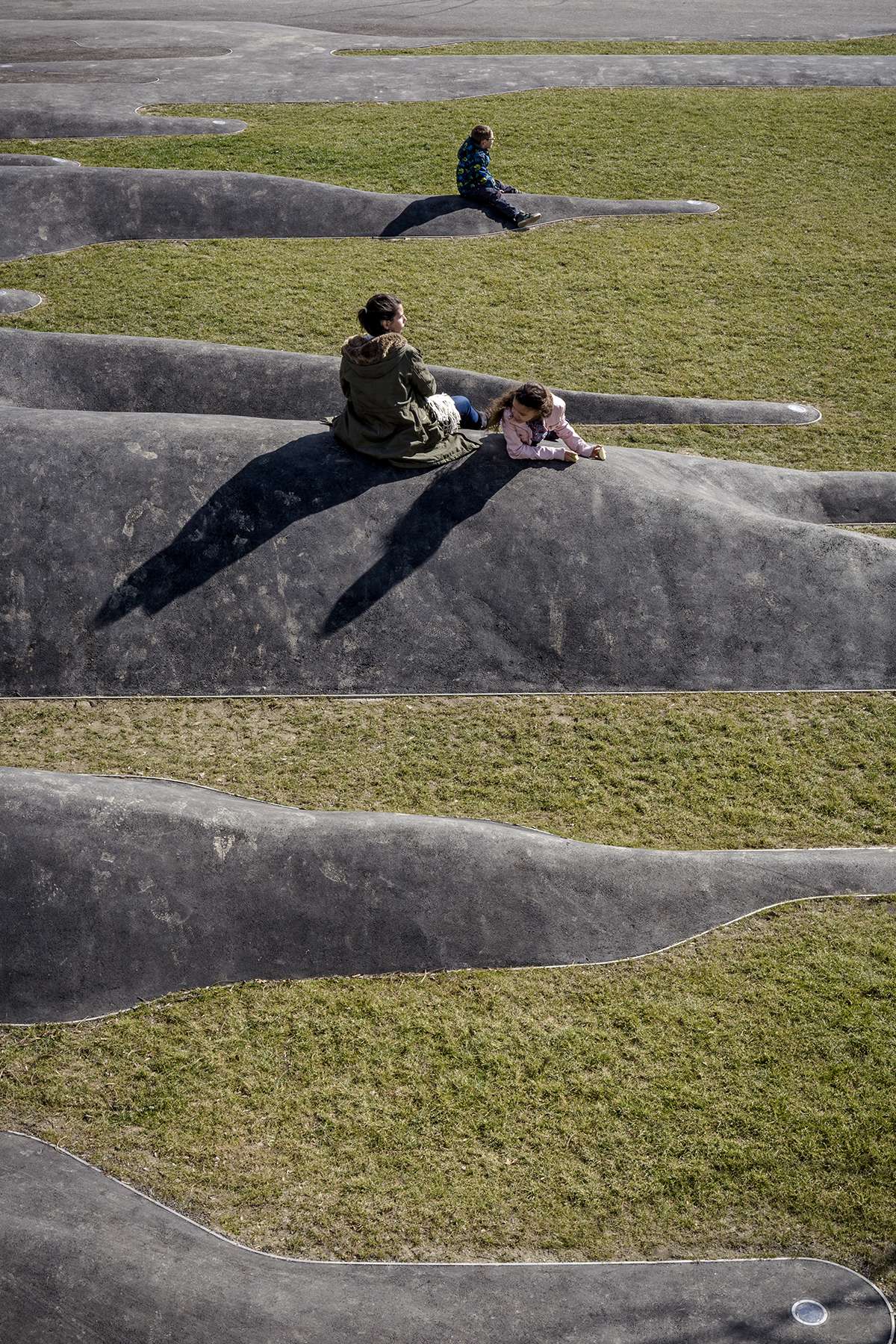
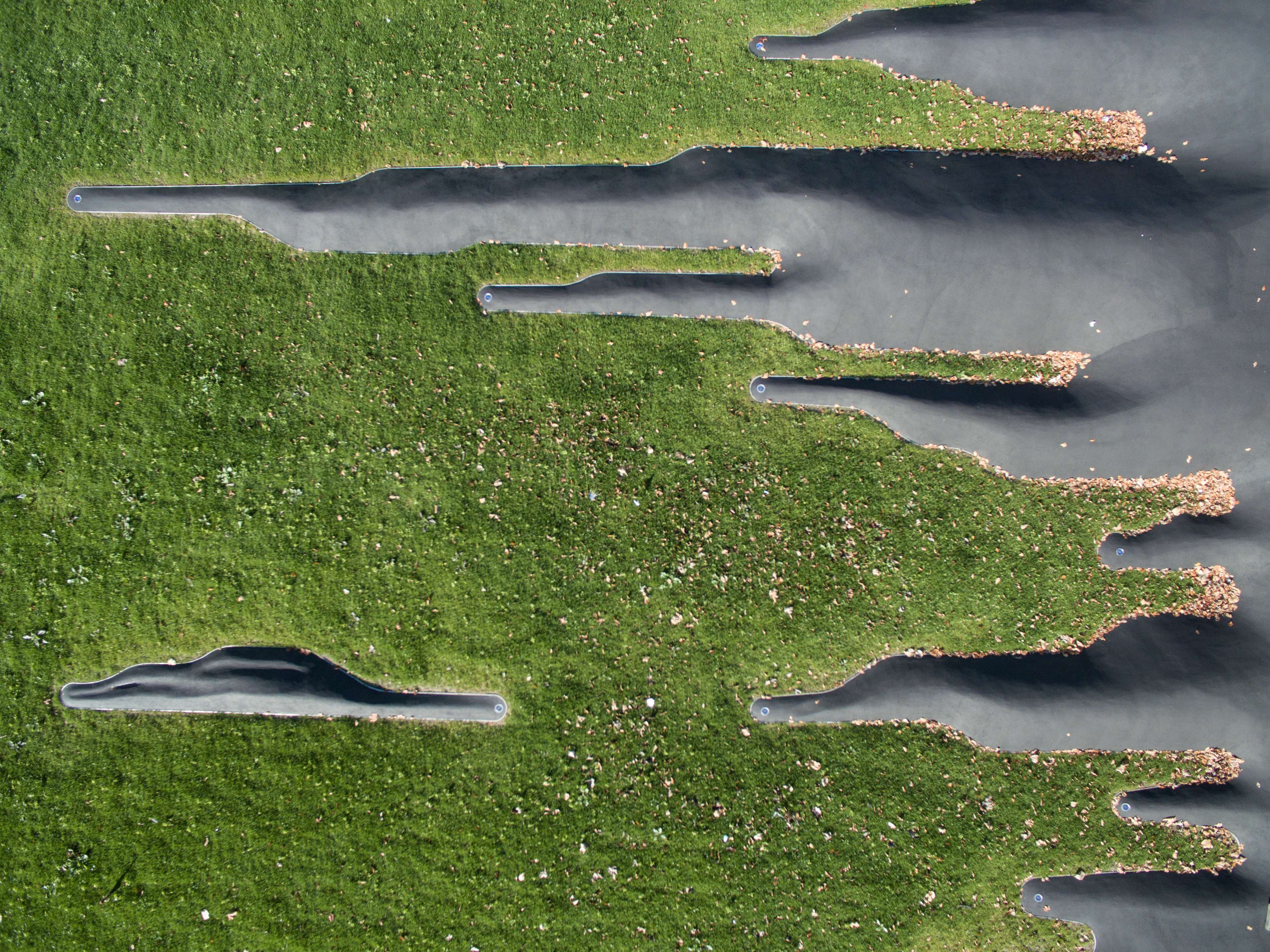
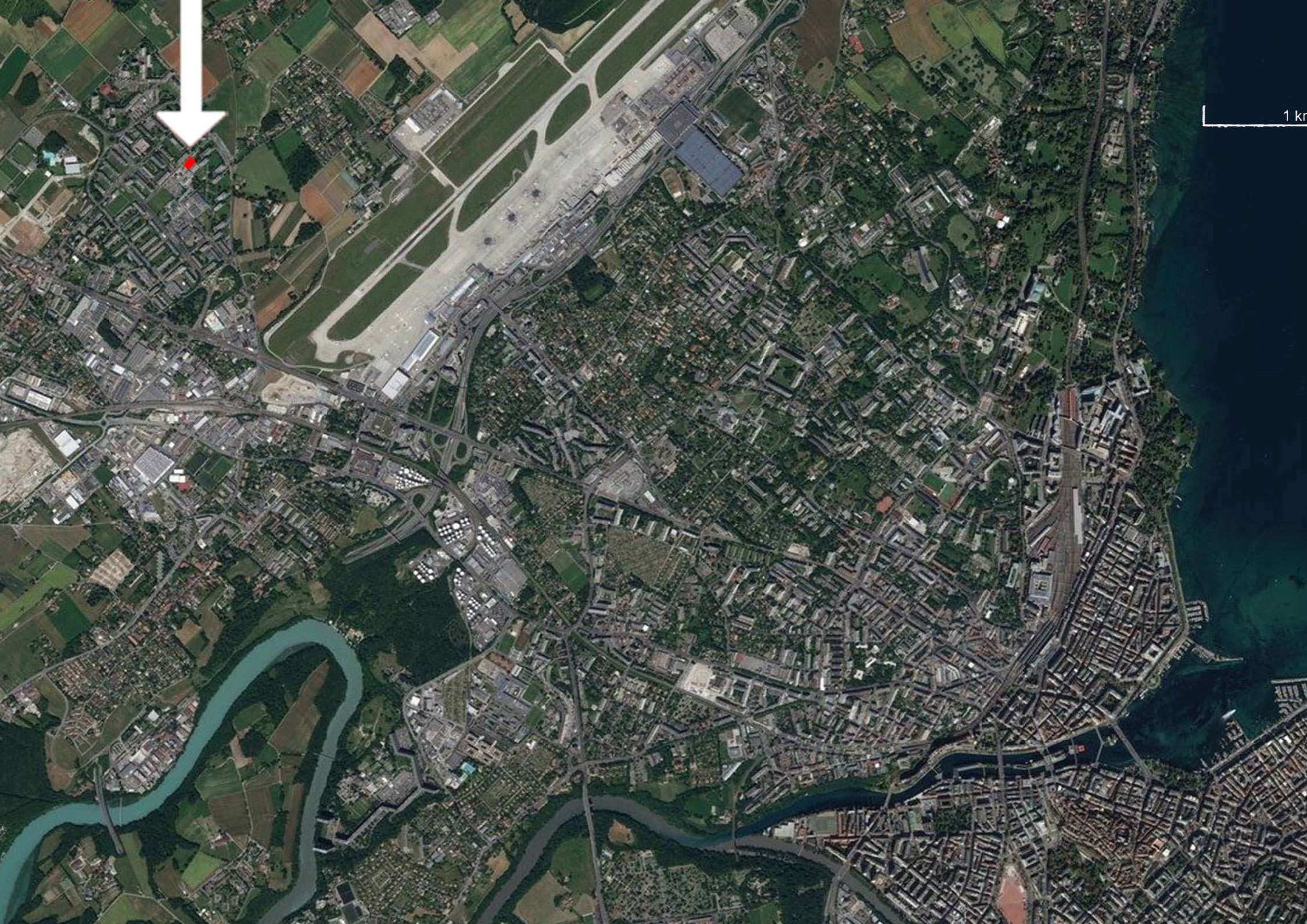

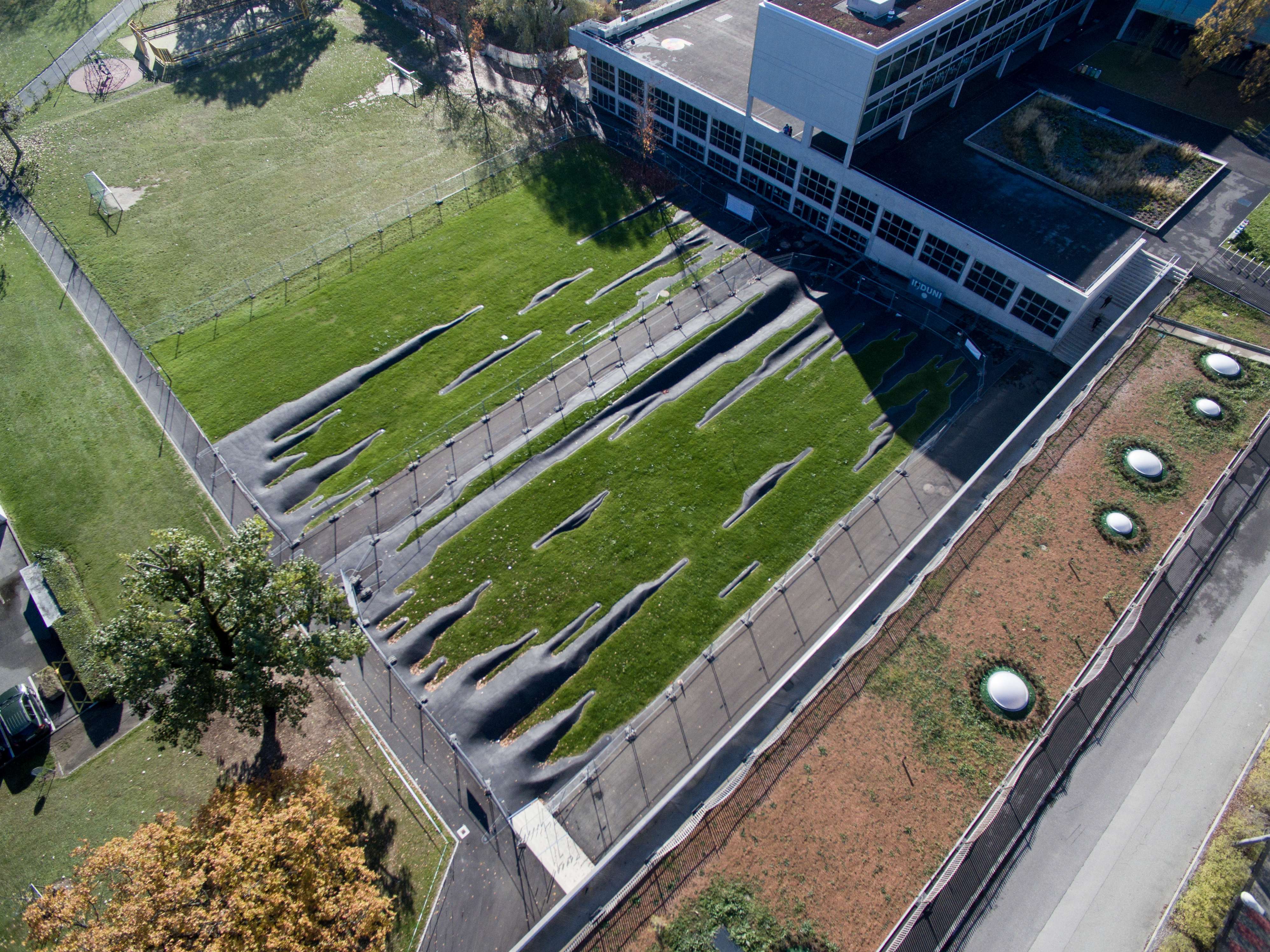

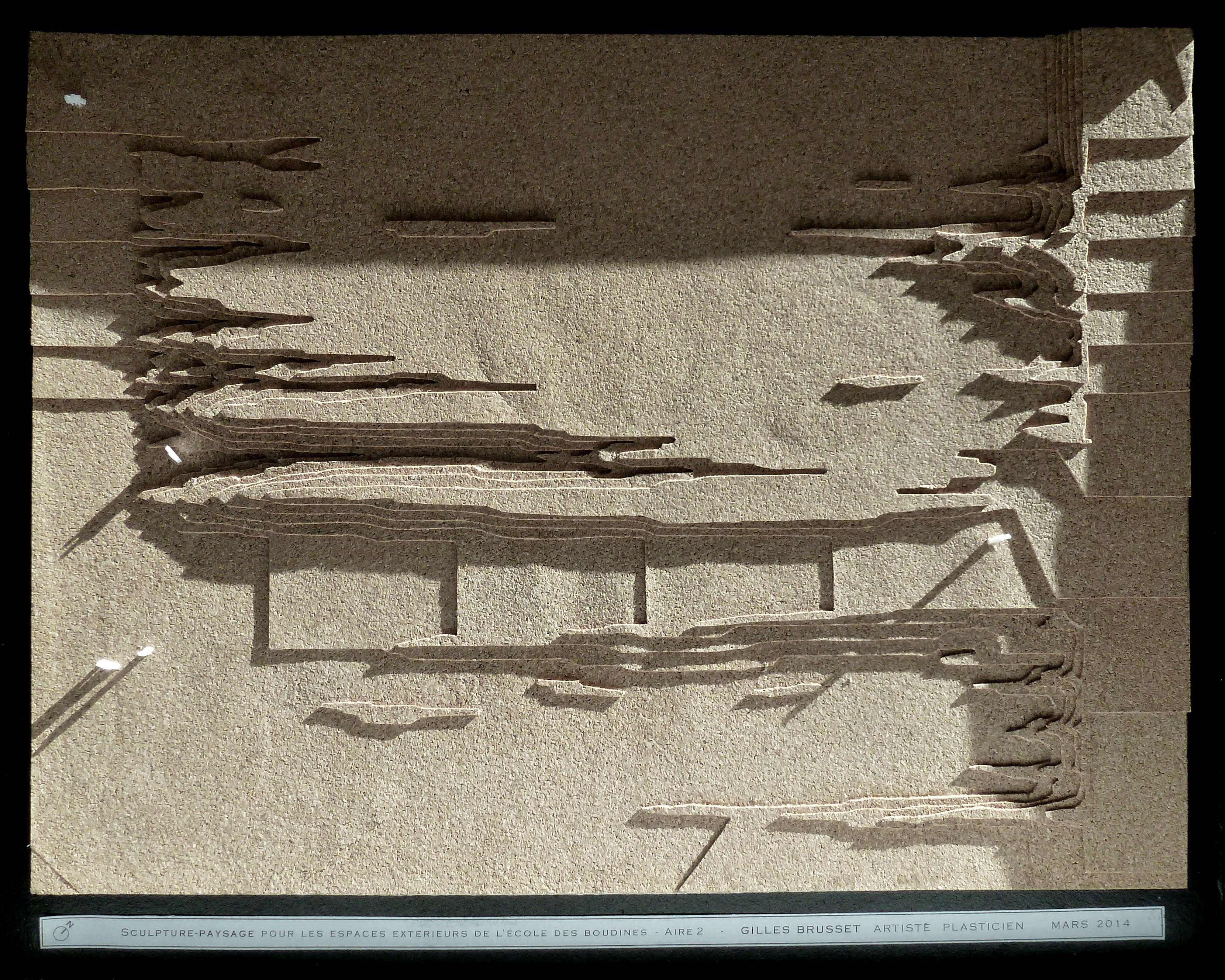
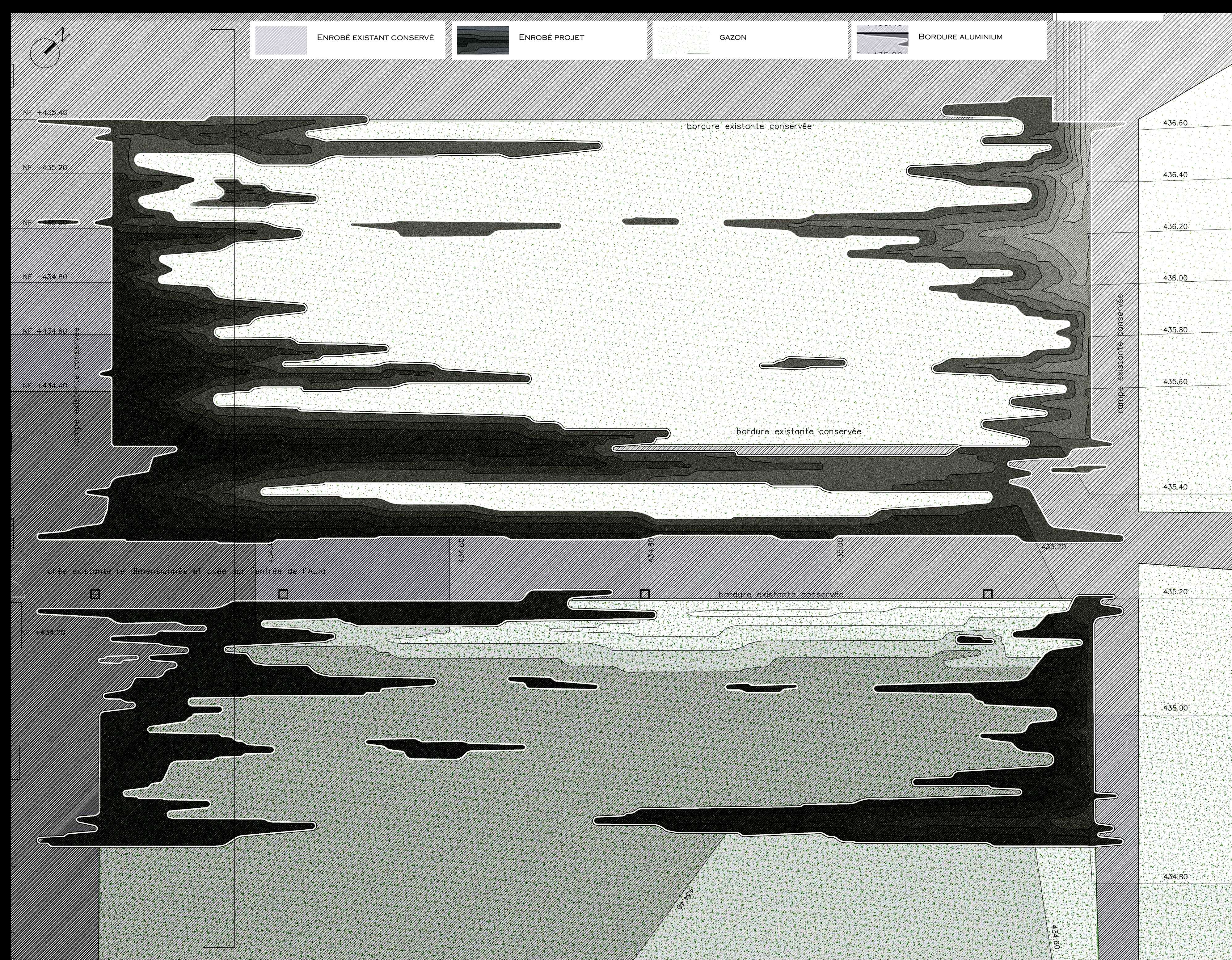
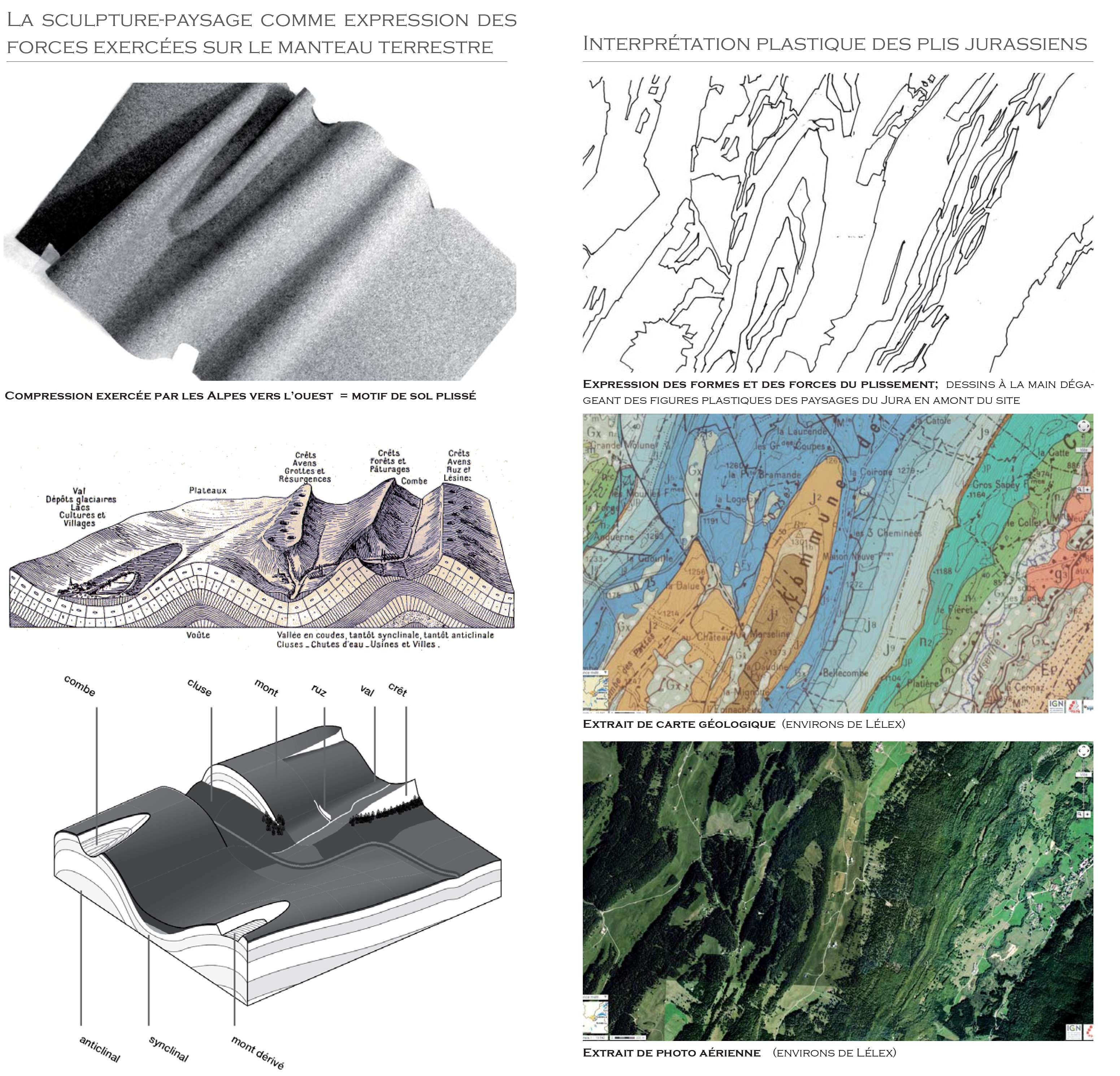

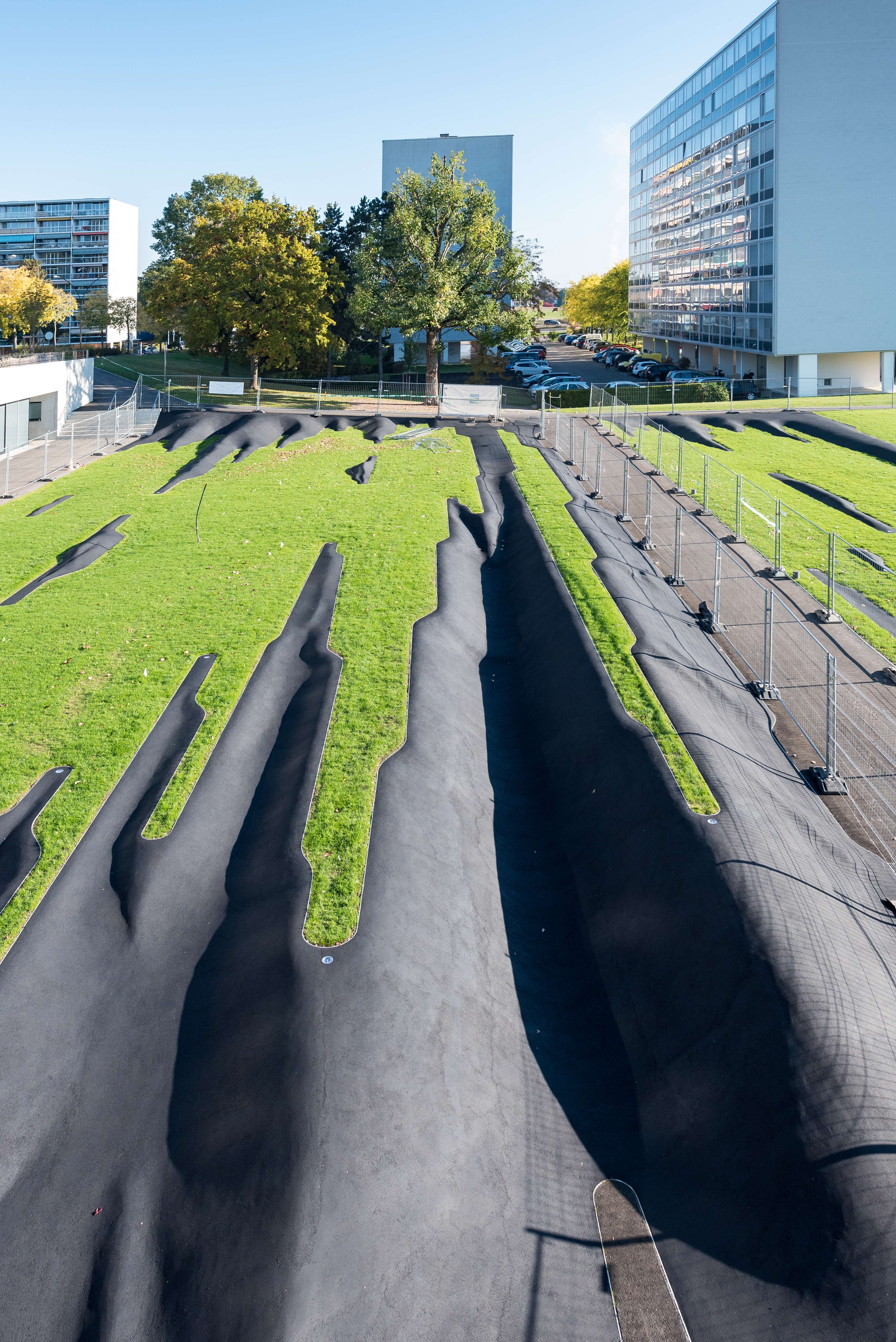
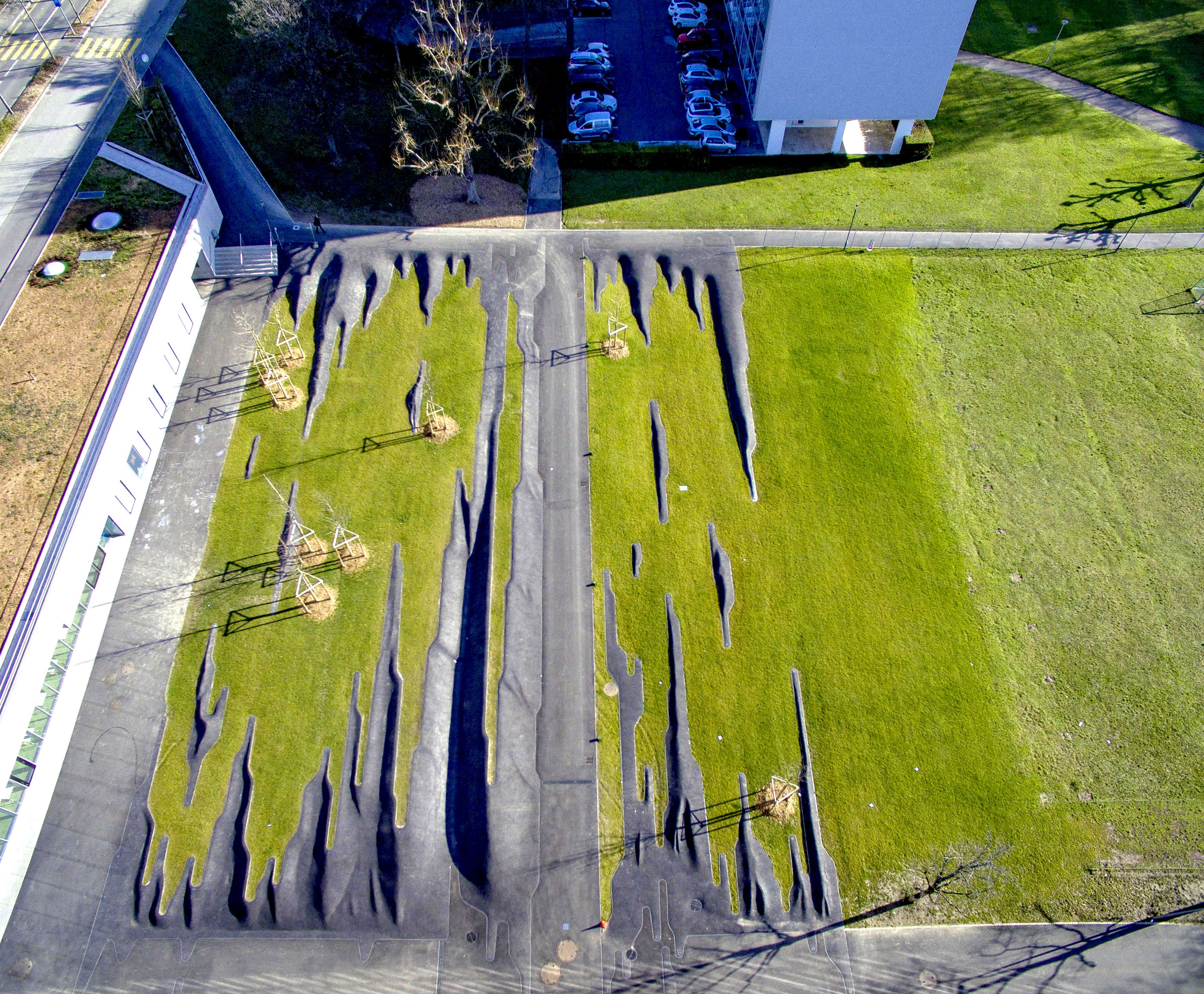
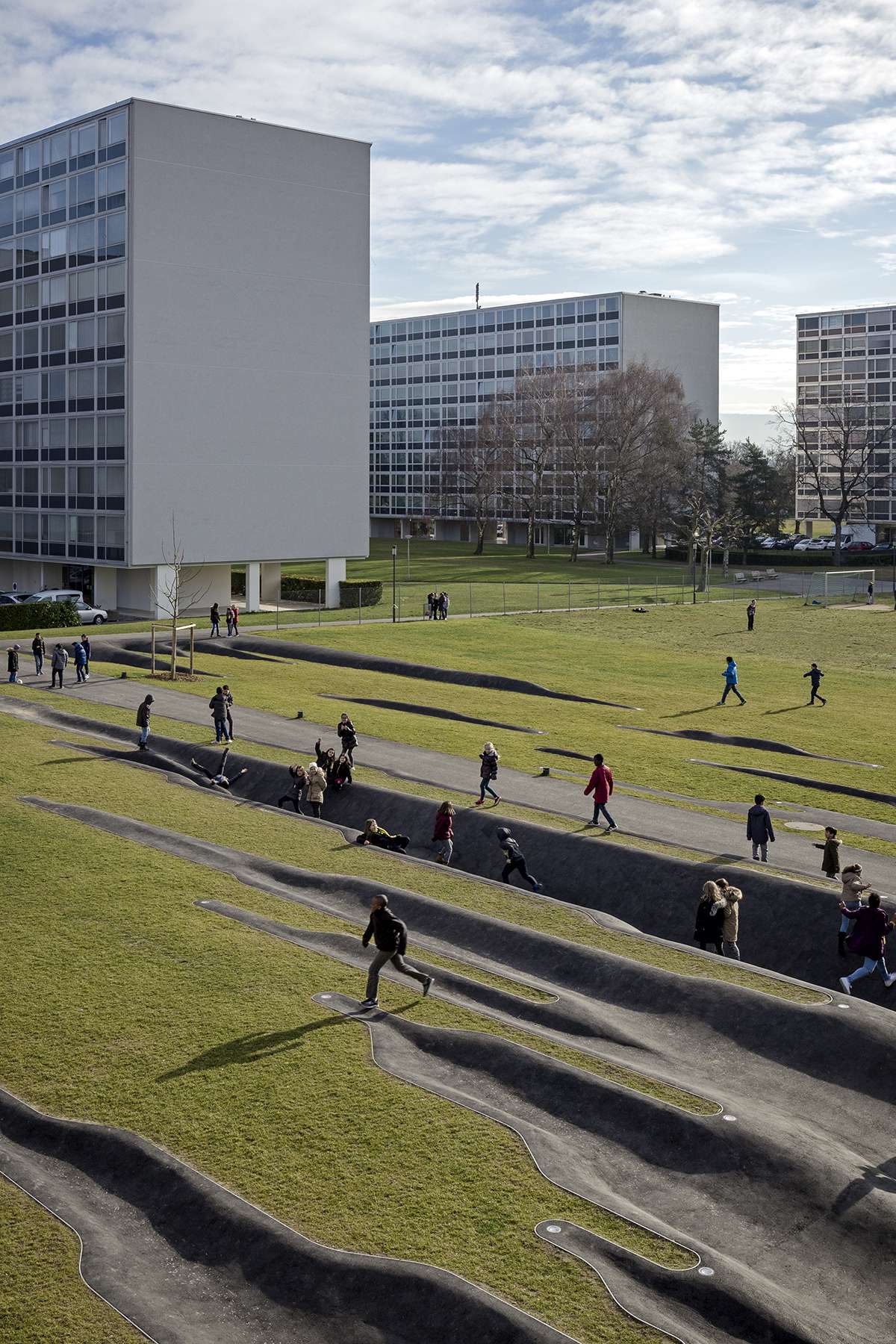
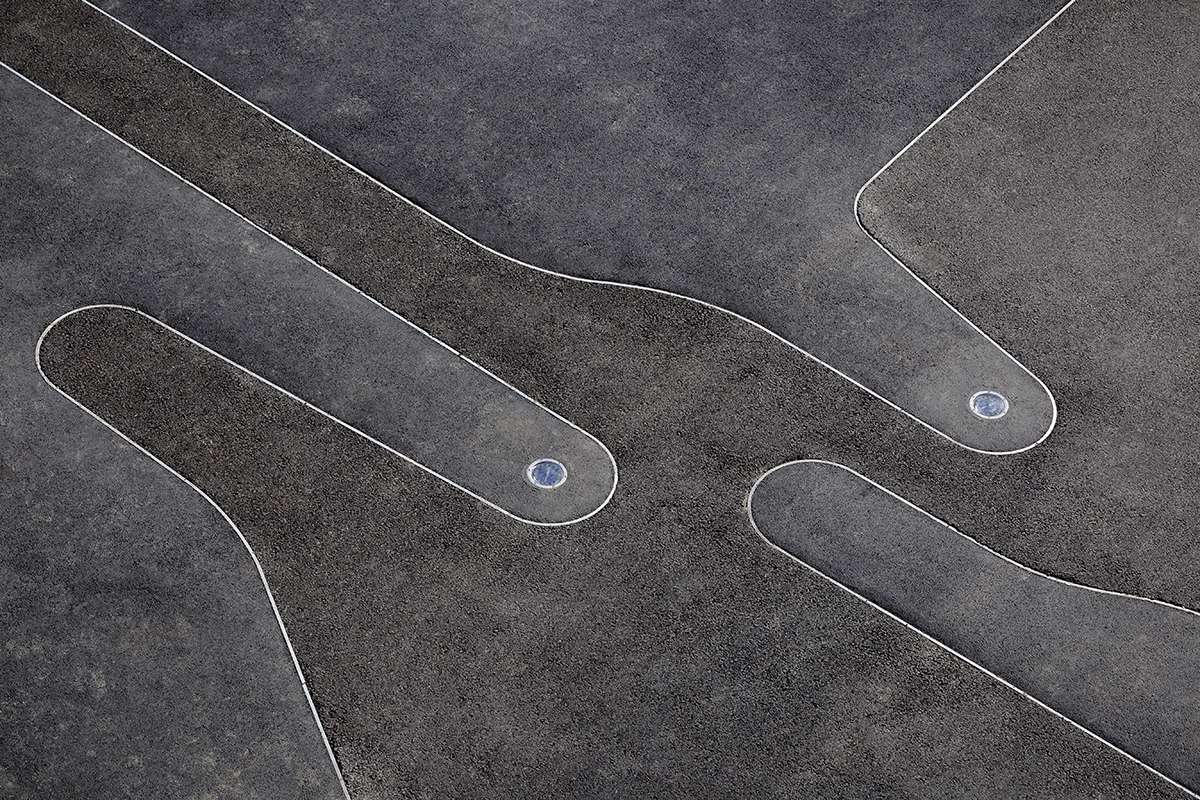
L'enfance du pli
the fold's childhood
Meeting of Two formal Formal Systems: In the orthogonal landscape of Meyrin -park Park and near the flat facades of the École des Boudines, sculpture-landscape emerges in curves and volumes. It is a response to the principle of tabula rasa, to the deliberate ignorance of the pre-existing landscape that presided over the realization of Meyrin-park. Within the modern "radical" city, the artistic project inscribes a set of differentiated forms, extraordinary in the context of the orthonormal city.
The return of the topographical plot: The formal system of sculpture freely develops its dynamic undulations in the ground of the exterior spaces of the École des Boudines, freed from the relentless formal system of the straight lines of Meyrin -pPark.
Games of Space and Time: From the heights, one can see the Fold’s childhood as a picture evocative of the folded and undulating landscapes of the Jura, a model imaginary site of the mountains lying. It is a set of shapes that can also be traveled, and paced. The spatiality of the fold offers the children a spatialphysical experience of the curve and a variety of situation differentiated in the space of the pleated floor. From the near to the far, from the fold of the curve to the stretched line of the architectural horizon, children’ the bodies and the eyes of the children find articulations, entering into a new relation with the immensity of the sky of Meyrin Park,, bBeyond the valley of Geneva and the massifs of the Jura.
Generic spaces - Increased efficiency in the design and construction of housing (standardization) is often accompanied by a loss of perception of the site in geographical space. The flattening of the topography, ignorance of the past and the masking of horizons by the buildings lead to a generic space, off-site.
Specific places: The location, forms, exposure, soil and horizons of a place forms a unique identity card. The specificity and uniqueness of the places are defined by a certain number of concrete elements more or less sensitive. These elements are a reservoir of materials for creative projects. Using the elements of the site as raw material of the work allows its inseparable inscription. The identity of the transformed places is then highlighted by works that sing the poetry of places. The work of art and the landscape project then escape the status of object to be incorporated into the site. The inhabitant, the visitor and the passerby can then experience a presence effect to the particular world. The uniqueness of the site made sensitive then echoes the individuality felt, the feeling that everyone can be unique.
A modern site: Meyrin Park was built according to the principles of modern architecture, including that of the clean slate: The first act of the Meyrin-Parc project was therefore to level the small hill - or fold - which pre-existed (which presumably gave its name to the site: "Les Boudines"), in order to install the buildings in the efficient universal park of the Athens Charter. The urban spaces of Meyrin-parc are pedestrian, structured by the arrangement of buildings on stilts and paths crossing large expanses of lawns punctuated with groves.
Restitution of a geographical situation: The sculpture-landscape settles in the middle of the site, modifies the ground and reinterprets forms of the landscapes of Jura, in the manner of a topographical model. 50 years after the modern advent, the artistic project of "L'enfance du pli" restores instead the specificity of a situation in space. Provoked by sculpture, the folding of the ground offers a game of succession of horizons and interiority in a vast expanse that was devoid of it.
Spatiality of folding = Landscape of childhood - "L'enfance du pli" is a monumental sculpture which is also an ideal model of the topography of the Jura massifs (folded relief). The succession of slopes, hills and valleys, the interfaces between the mineral soil and the vegetal soil, the runoff paths are all notions of geography rendered apprehensible by means of their plastic expression. Sculpture-landscape produces a crisscross spatiality that offers children a sensitive pedagogy, a physical experience of the curve and a variety of situations differentiated in the space of the pleated ground. The series of hills and curvatures outline an enveloping horizon. The topography in which the children evolve gives a tangible reading of the space thanks to the altimetric landmarks and lines of horizons at their height (40 to 140 cm) drawn by the soft emergence of the shapes of the folded hills. The levels of their crest lines give young children benchmarks of heights to measure themselves against the space as they grow. The classic elements of games, furniture, sandboxes, grassed land movements or flexible soil are replaced by the imaginary geography of sculpture-landscape. In a broad movement, it unifies the variety of children's games.
